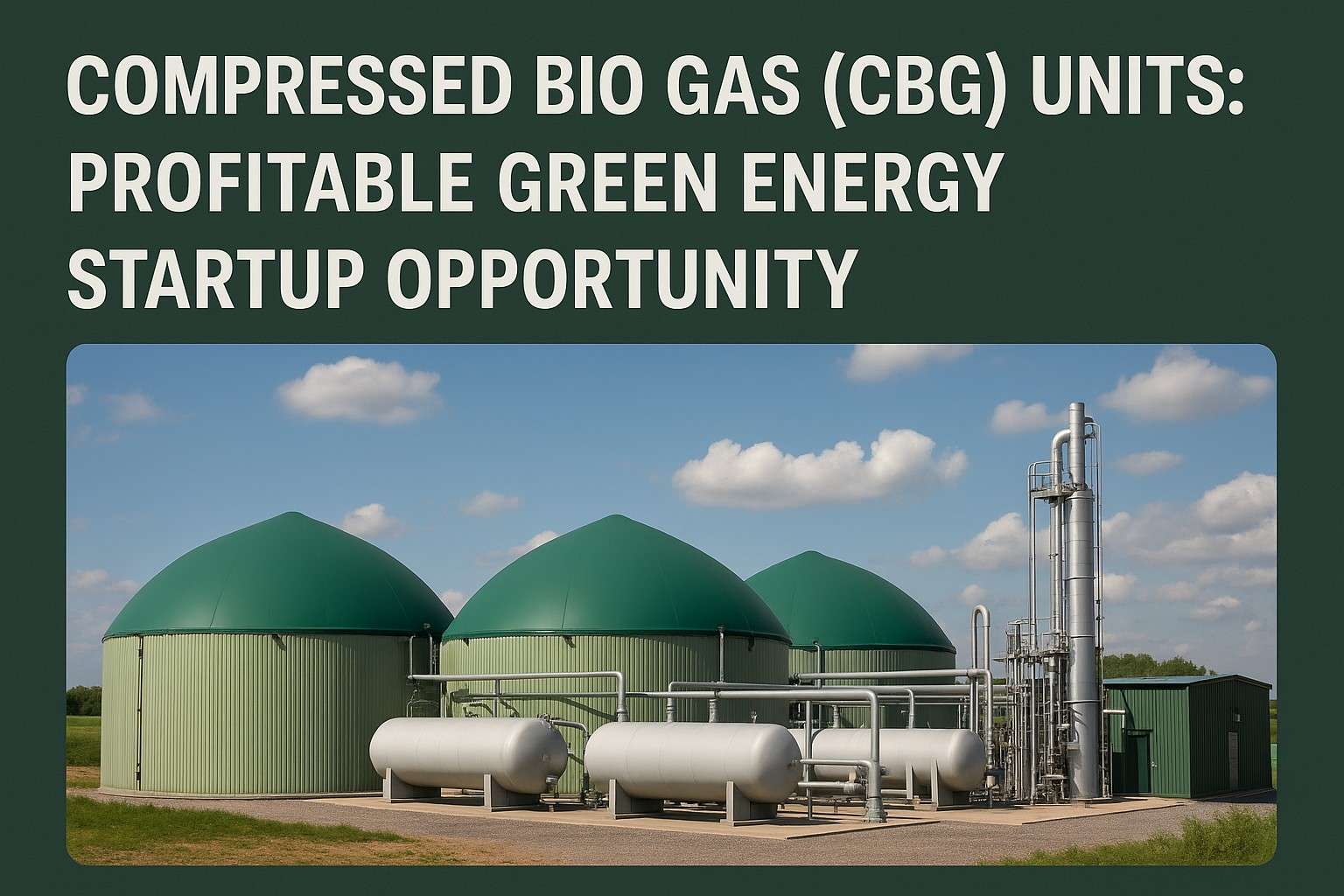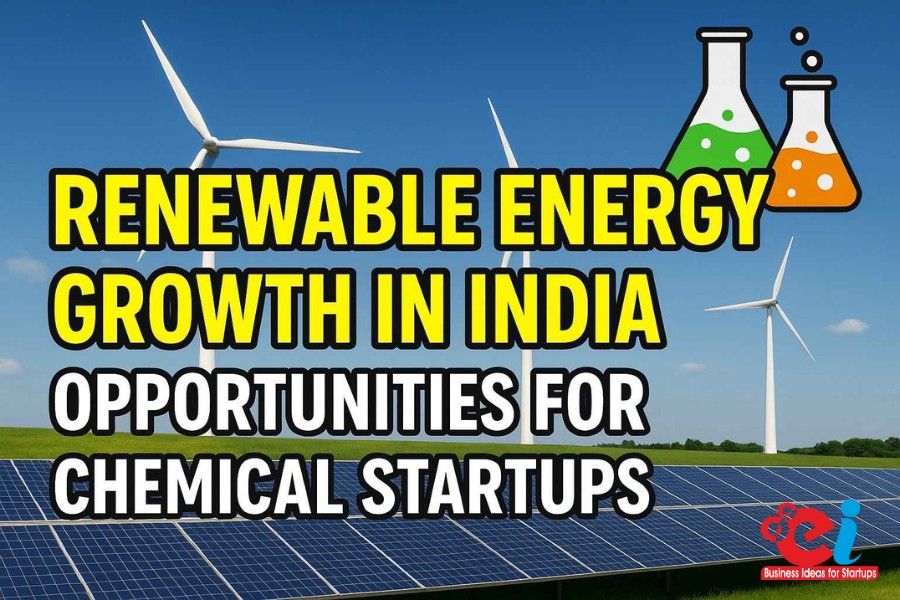Shivamogga city in Karnataka is famous for tourism and also features the world’s largest Greenfield Compressed Bio Gas (CBG) plant, south of Bangalore. CBG is one of the renewable and environmentally friendly fuels which till now was a sidelined asset waiting to be discovered. India is fortunate that this industry is now in the forefront due to the increase of startups which is further strengthened by Reliance Industries Ltd. (RIL) remotely sparking green ambers in Indian industry by opening the 500 planned CBG plants in Andhra Pradesh with an investment outlay of ₹65000 crores. He started with flagship CBG plant set at 139 crores at Kanagiri, Prakasam district.
What is Compressed Bio Gas (CBG)?
Compressed Bio Gas, or CBG, is a clean biogas that meets specific standards. It is derived from biomass feedstocks such as:
- Agricultural residue
- Animal waste
- Municipal Solid Waste (MSW)
- Food and vegetable waste
- Sewage sludge
CBG comprises around 95 percent of methane, thus it can be conveniently used in place of Compressed Natural Gas (CNG) in automobiles and industrial burners.
Main By-products:
- Fermented Organic Manure (FOM) – Bio-fertilizer consisting of organic waste from industries.
- CO₂ recovery – Provides service in the soft drink, refrigeration, and fire-extinguisher industries.
Related: India is Geared for Energy Transition and Climate Action. This is the Time to Invest in Renewable Energy
Reliance’s Mega Vision: Catalysing the CBG Ecosystem
The innovation strategies for the biofuel market started out with the goal to induct transformative change in traditional approaches, and their first plant in Andhra Pradesh was aimed to achieve a closed-loop bio-energy system. The Divakarapalli CBG unit occupies 475 acres and aims to produce 100 tonnes per day of CBG from Napier grass farming on fallow land this unit has leased from farmers.
Project Highlights:
- An aggregate of five hundred thousand acres will be cultivated for Napier grass in Prakasam, Anantapur, Chittoor, and Kadapa districts.
- When full capacity is met, the production of green CBG will hit 4 million tonnes annually.
- There will be an annual organic fertilizer by-product production of 1.1 million tonnes.
- 250,000 jobs for rural youth as the new CBG units and production plants open.
This is an example of a circular economy: harvesting energy and income as well as creating jobs from resources such as waste and fallow land.
Market Dynamics and Demand Potential
Growing Energy Needs:
India’s projected gas consumption will be around 200 billion cubic meters per year by 2030, which reflects a 100% increase. There is an increasing demand for cleaner fuels like CBG due to the rising number of vehicles and people living in cities.
Government Side:
- In line with SATAT, the Ministry of Petroleum and Natural Gas has plans to support the CBG economy by creating 5000 CBG facilities by 2025.
- The Indian Oil Marketing Companies guarantee buying CBG from Indian Oil, HPCL, and BPCL for the long term.
CBG price is comparable to CNG at ₹50-₹55 per kg, setting it as a reasonable purchase for consumers while maintaining profitability for producers.
Feedstock Economics: The Importance of Napier Grass
The use of Napier grass as a primary feedstock by Reliance underscores the promise of non-food feedstock energy crops for biofuels production.
Advantages:
- Biomass yield is lower than 40 to 50 tonnes per hectare per year.
- Available year-round and helps improve soil condition and assists in eradicating erosion.
- Cultivation can occur on low quality land with negligible input provisions.
Increases the income of rural areas by contracting farmers which ensures Reliance has a consistent supply of materials through:
- Payment from land leases
- Grass purchase contracts at set price
Related: Scheme for Financing Compressed Biogas (CBG)
Entrepreneurial Potential Within the CBG Value Chain
A. Collection & Transportation of the Feedstock
There is potential for entrepreneurship in:
- Dairy and poultry farm waste
- Municipal wet waste
- Agricultural byproducts
B. CBG Plant Engineering & Operations
There is demand for:
- Gas purification skids
- Safety and odor control ventilation systems
- Modular digester systems
C. Organic Fertilizer Distribution
Additional profit avenues open up from retail and export opportunities when the fermented slurry is marketed and sold as bio manure.
D. Carbon Credit Trading
Carbon credits can be traded in voluntary carbon markets from CBG plants. Startups can create systems for:
- Trading and verifying carbon credits
- Carbon measuring and verification
Jobs and Jobs Related to Rural Development
In the supply chain alone, Reliance’s proposal will result in:
- 250,000 jobs
- Employment in technical roles associated with plant operation
- Roles in Grass harvesting and Logistics Field Positions
- Supporting roles in Transport, Maintenance, and Packaging Auxiliary roles
It’s a double edged sword for India:
- Security of energy
- Boom of the farmers’ income
- Shift of job opportunities to countryside
Innovations and Technology, Growth Potential
Main Segments of Technology:
- Anaerobic digesters
- Membrane biogas upgrading units
- Hydrogen sulphide scrubbers
- Automated slurry separators
There is Technological potential in Evolving systems for AI control of the processing plant, gas quality assessment, and bio-slurry optimization, private entrepreneurship, and public investment found.
Subsidies and Government Policy
Subsidies for capital expenditures:
The government subsidy ranges 30–50% on capital expenditure for CBG projects under SATAT and its related schemes.
Soft Loans:
The following are available to Startups as Loan Facilities:
- Stand Up India
- PMEGP
- MSME credit facilities
Policy Optimizers:
- Funding of the viability gap
- 10 year guaranteed offtake by OMCs
- Corporate income tax and GST exemption on renewables benefits
Risks and Challenges
Despite the enormous potential, some hurdles for entrepreneurs are the following:
- Access to feedstock is seasonal and its cost fluctuates
- Very high initial capex (₹10–15 crore for every 10 TPD plant)
- Clearances: Environmental/Electric/municipal Permitting
- Gestation period (12–18 months post setup to breakeven)
That said, these challenges can be offset by technology, consortium model, subsidizing the state, and more efficient state policies.
Investment Snapshot
Project Capex (10 TPD CBG Plant):
- Land & Civil Work: ₹2–3 Cr.
- Plant & Machinery: ₹6–7 Cr.
- Working Capital: ₹1–2 Cr.
- Total Estimated Investment: ₹10–12 Cr.
ROI:
- Break-even: 3–4 Years
- IRR: 18–22%
- DSCR: 1.8 – 2.2
Revenue certainty is high with increasing demand from city gas networks and green-fuel transitioning industries.
Case for Future Growth: Initial-2025 Outlook
Adani Gas, Torrent, and Standalone IPPs are other contenders expected to scale after Reliance finishes its 500 plants.
India’s plans to achieve the adoption of CBG include:
- Sending Bio-Energy as surplus bio-manure to Africa and Southeastern Asia
- Initiating more than 1,000 bioenergy clusters
- Replacing 10% of CNG with CBG
Applying Feasibility Assistance to Green Startups by NPCS
Without any hesitation, Niir Project Consultancy Services (NPCS) boasts that it assists every entrepreneur who desires to venture out in the bio energy ecosystem.
Each of our Market Survey cum Techno-Economic Feasibility Reports dissects:
- Elaborate mapping of raw material supply chain
- Financial analysis framework (CAPEX & OPEX)
- Feasibility Execution Model
- Strategic amount for Revenue and spending
Combined with our Business Goals and the Comprehensive Detailed Project Reports (DPRs), these are curated to provide assurance to startup businesses inclined to approach lending institutions, sponsors of finance, or governing and non-governing bodies seeking trustful capital.
Final Thought: The New Energy Frontier Change By Entrepreneurs
Fueled by the strong spirit of entrepreneurship, the CBH revolution in India not only acts as an energy type change but also gives rise to green initiatives with ecosystem improvements along with entrepreneurship development in the country.
The most remarkable Clean Biofuel Diesel (CBH) expansion possibilities come from the industry’s potential growth paired with a complete industrial development plan and support. Moreover, if entrepreneurs focused their efforts, the industry could grow tremendously for those investing into this clean energy segment will shape the future of the clean energy revolution in India.
Eco-venturers or techanga entrepreneurs can take advantage of the compresses biogas offsetting clean fuel costs on DIG devices toward patented environmental mechanisms.

























